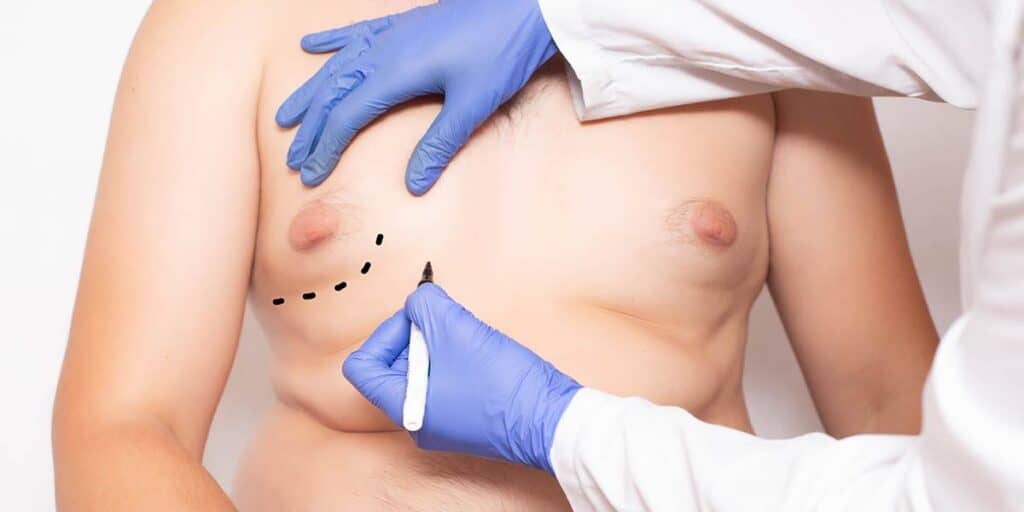
Chest Masculinization / By Arian Mowlavi
Gynecomastia vs fat is a common thought that patients with puffy nipples may have. It can be confusing to understand the physiology of gynecomastia which appears as enlarged breasts that is associated with enlarged nipple areola complex. Often, the enlargement of the nipples and areola may appear herniated, thus the description of puffy nipples. This herniation is typically caused by the weight of the glandular tissues that lie underneath the nipple and areolas. This glandular tissue can be firm and often described as discoid like. When this tissue is moderate to large in size, it may have to be directly excised. The direct excision of the glandular tissues is often referred to as gynecomastia surgery. This might in fact be the reason for confusion of gynecomastia vs fat.
Gynecomastia is actually the condition or diagnosis for enlarged and feminized breast appearance in males. Although gynecomastia was originally described as overgrowth of mammary glands, optimal gynecomastia surgery must not only remove the glandular component but also remove excess fat as well. This is because the same factors that cause overgrowth of glandular tissue also result in overgrowth of the fat cells in the chest region. As such, effective treatment must consider removal of both tissues. Gynecomastia vs fat should actually read as gland vs fat when it comes to gynecomastia physiology. Enlargement of the gland vs fat can be variable. When gland enlargement is more prominent, then direct excisional surgery of the gland should be considered. Then the fat excess component is more dominant, then liposuction should be considered. Most often, a combination of direct excision and liposuction is required. If you are wondering if you have more glandular vs fatty tissues, a complimentary consultation with our gynecomastia surgeon will help understand your unique gynecomastia needs and a customized gynecomastia surgery.